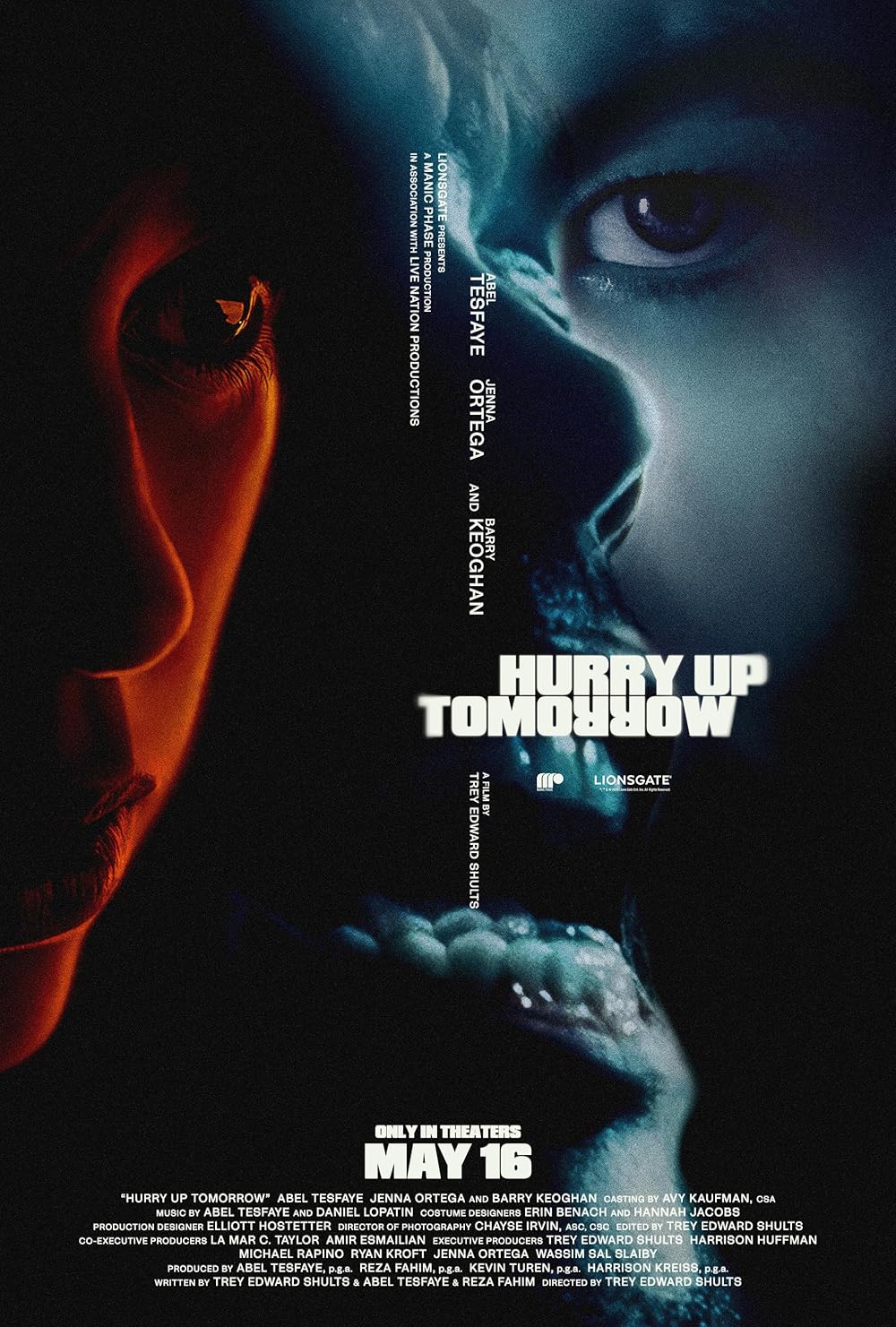## Jenna Ortega and The Weeknd: A “Drive” into Darkness That’s All Too Familiar
Hold onto your hats, music lovers, because The Weeknd just dropped a music video that’s sending shockwaves through the internet. The song? “Drive,” a haunting track that oozes with his signature blend of dark synth and brooding vocals. The co-star? None other than the queen of the macabre herself, Jenna Ortega, fresh off her chilling performance in “Wednesday.”

Unpacking the Visual Metaphors

The music video for “Drive” by The Weeknd, featuring Jenna Ortega, is a thought-provoking visual representation of the song’s themes. At its core, the video is an exploration of the blurred lines between reality and fantasy, as The Weeknd’s character navigates a world of insomnia and strange visions.
The use of visual metaphors is a key element in the video’s narrative. The Weeknd’s character is often seen surrounded by fragments of his own memories, which are distorted and manipulated to create a sense of disorientation. This is a clear reflection of the song’s lyrics, which speak to the disintegration of one’s sense of self.
The character’s encounters with the mysterious stranger serve as a catalyst for his inner turmoil, as he begins to question the nature of his reality. The video’s use of time travel and other techniques adds to the sense of disorientation, blurring the lines between past, present, and future.
Furthermore, the video’s use of symbolism can be seen as a reflection of The Weeknd’s own personal experiences. His struggles with addiction and insomnia have been well-documented, and the video serves as a visual representation of these struggles.
The Weeknd’s Insomnia and Visions
The Weeknd’s character is plagued by insomnia, which is a recurring theme throughout the video. This is a clear reflection of The Weeknd’s own struggles with the condition, which he has spoken about publicly. The use of insomnia as a metaphor for the fragmentation of one’s sense of self is a powerful commentary on the human experience.
The character’s strange visions are also a key element of the video’s narrative. These visions serve as a manifestation of his inner turmoil, as he struggles to come to terms with the fragmented nature of his reality. The use of these visions as a metaphor for the disintegration of one’s sense of self is a powerful commentary on the human experience.

The Enigmatic Stranger and Time Travel
The mysterious stranger who appears in the video serves as a catalyst for The Weeknd’s character’s inner turmoil. The stranger’s true identity and motivations are left ambiguous, adding to the sense of mystery and intrigue.
The use of time travel or other techniques in the video adds to the sense of disorientation, blurring the lines between past, present, and future. This serves as a metaphor for the fragmented nature of one’s sense of self, as The Weeknd’s character struggles to come to terms with the disintegration of his reality.
Industry Trends and Controversies
The Music Industry’s Shift in Terminology
The music industry has recently been attempting to redefine terms like “first pressing”, “collectors edition”, and “limited version”. This shift in terminology has been met with resistance from fans and collectors, who feel that the industry is trying to gaslight them into changing the meanings of these terms.
This trend is not limited to The Weeknd and Beyoncé’s releases, as other artists have also been using these terms in new and confusing ways. The music industry’s attempts to redefine these terms are a clear example of the industry’s desire to manipulate consumer perceptions and maximize profits.
The Weeknd and Beyoncé’s Releases
The Weeknd and Beyoncé are two of the most successful artists in the music industry, and their recent releases have been met with widespread critical acclaim. However, their use of these redefined terms has been met with resistance from fans and collectors, who feel that the industry is trying to gaslight them into changing the meanings of these terms.
The use of these redefined terms is a clear example of the industry’s desire to manipulate consumer perceptions and maximize profits. The Weeknd and Beyoncé’s releases are a clear example of this trend, as they have been using these terms in new and confusing ways.
Fan Reactions and Backlash
Fans and collectors have been reacting to these changes with a mix of confusion and outrage. Many have taken to social media to express their discontent, calling out the industry’s attempts to manipulate consumer perceptions and maximize profits.
The backlash against the music industry’s efforts to redefine these terms is a clear example of the power of consumer resistance. As fans and collectors continue to push back against these changes, the industry will be forced to reevaluate its approach and find new ways to engage with its audience.
Conclusion
In conclusion, The Weeknd’s latest music video “Drive” has left fans and critics alike reeling, not just due to its stunning visuals and catchy beats, but also its thought-provoking themes and clever casting of Jenna Ortega. As we’ve discussed, the MV’s exploration of toxic relationships, power dynamics, and the commodification of love raises important questions about our societal values and the music industry’s role in perpetuating them. The Weeknd’s intentional subversion of his own public image and the clever use of Ortega’s “Wednesday” persona add layers of depth to the narrative, making it a must-watch for anyone interested in deconstructing the complexities of modern relationships.
The significance of “Drive” lies not only in its cultural relevance but also in its ability to spark necessary conversations about accountability, consent, and the objectification of women. By using his massive platform to tackle these issues, The Weeknd is contributing to a larger movement of artists using their voices to challenge the status quo. As we move forward, it will be fascinating to see how the music industry responds to this shift in consciousness and how artists will continue to push boundaries in their storytelling.
Ultimately, “Drive” is more than just a music video – it’s a reflection of our collective psyche, a commentary on the darker aspects of our desires, and a call to action. As we continue to navigate the complexities of love, relationships, and identity in the digital age, The Weeknd’s “Drive” serves as a poignant reminder that art has the power to inspire, provoke, and challenge us to do better. So, the next time you find yourself lost in the haze of a toxic relationship or tempted by the fleeting highs of social media validation, remember: the drive to love and be loved is a powerful force, but it’s up to us to steer it towards a more empathetic, compassionate, and just future.
